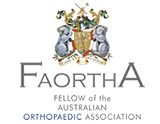
Iliotibial Band Syndrome
Iliotibial band syndrome is an overuse injury resulting from the inflammation of iliotibial band. Iliotibial band is a tough group of fibres that begins at the iliac crest of hip and runs along the outside of the thigh, to get attached to the outer side of the shin bone just below the knee joint. Its function is to coordinate with the thigh muscles and provide stability the knee joint. Iliotibial band syndrome occurs when the iliotibial band and the lower outside portion of the thigh bone at the knee joint rub against each other. It commonly occurs in athletes, cyclists, and runners.
Causes
Iliotibial band syndrome can occur from quickly increasing distances with running or biking type activities. Other predisposing factors associated with the injury include running on uneven surfaces, wearing improper fitting shoes, uneven leg length, muscle imbalance, over pronation of foot, and bowed legs.
Symptoms
Children with iliotibial band syndrome may have pain on the outer side of the knee, swelling at the site of injury, and popping sensation may be felt when the knee is bent and then straightened. Pain may worsen after running, climbing stairs, and walking and reduced when your child is at rest.
Diagnosis
To diagnose the condition your doctor will ask about the nature of pain, your activity level, participation in sports and other factors related to the condition. You will be asked about any related medical conditions that could be contributing to the condition. A careful physical examination of your hip and knee will be performed to identify and to rule out conditions with similar symptoms.
If the diagnosis is unclear your doctor may order following tests:
- X-ray: X-ray of the knee may be taken to see for other injuries that may lead to the problem.
- MRI (Magnetic Resonance imaging) scan may be required to look for the problems with the soft tissues inside and around the knee such as cartilage and ligaments.
Conservative Treatment Options
The goal of the treatment is to reduce the inflammation and to relieve the pain. The treatment options include:
- Rest: Allow the joint to rest to reduce the inflammation. Do not encourage your child to run or participate in any physical activity that may worsen the pain
- Ice application: Ice packs should be applied to the site of injury which will help to diminish swelling and pain. Ice should be applied over a towel to the affected area for 15-20 minutes four times a day for several days. Never place ice directly over the skin
- Medications: Your doctor may prescribe nonsteroidal anti-inflammatory drugs to reduce the pain and swelling
- Foam Roller Myofacial Release- A foam roller is used underneath the tight iliotibial band to loosen it. Although this is painful, it is one of the most useful stretches to relieve the tissues
- Physical therapy: Physiotherapists will teach your child stretching exercises and techniques to loosen the tight structures. This exercise is done by holding the affected knee close to opposite armpit while keeping the other leg straight on the floor. These exercises help to strengthen the iliotibial band and the surrounding muscles
Your doctor suggests you to ensure that your child wears appropriate shoes while running to prevent further damage to iliotibial band.
Surgical Treatment
If conservative treatment options fail to relieve the symptoms then surgery may be necessary to treat most cases of iliotibial band syndrome.












